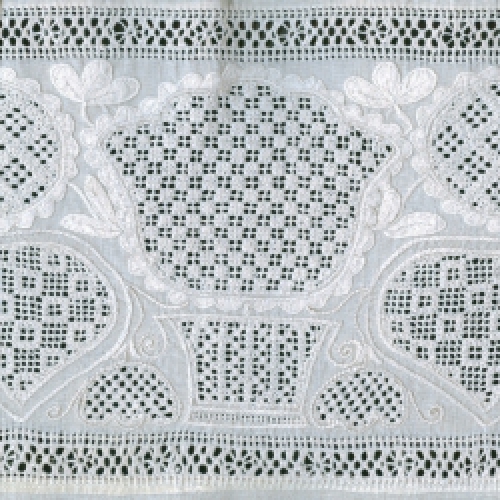The technique known today as “Schwalm Whitework” (see also: Typical characteristics of Schwalm Whitework) originated around the beginning of the 19th century.
The original designs show densely filled borders comprised mostly of large motifs such as hearts, tulips, circles and baskets or flowerpots. These motifs were embroidered with very different drawn-thread work patterns. The outlines of the motifs, the stems and the tendrils were stitched in Coral Knots. Open areas between the large motifs were filled with small leaves, small flowers and tendrils.
Those borders were usually worked with Four-Sided Hem stitch or Peahole Hem stitch. However, a finish of Needlewoven Hems and sometimes an additional small border was also common.



Leave a Reply